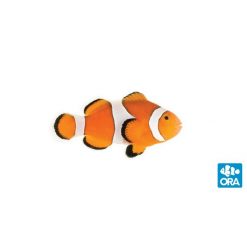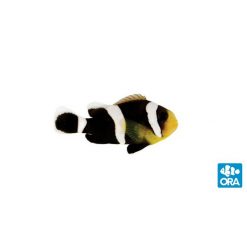About the ORA Aiptasia-Eating Filefish JUMBO
Care Level: Moderate
Temperament: Peaceful
Reef Safe: With Caution
Diet: Omnivore
Max Size: 3.5 inches
Minimum Tank Size: 30 Gallons
One of the best options for clearing an aquarium of invasive Aiptasia or Glass Anemones is the ORA Aiptasia-Eating Filefish (also known as the Matted Leatherjacket or Bristletail Filefish.) In the wild, the Aiptasia-Eating Filefish can be found in shallow seagrass beds, where its camouflage pattern disguises it from both predators and prey. Naturally occurring in shades of green, tan or brown it can quickly shift its mottled pattern depending on its environment or mood. They reach a maximum size of 3.5 to 4 inches and are peaceful with other fish. Males possess a distinct patch of bristles at the base of the tail, making sex determination quite easy.
Most Aiptasia-Eating Filefish readily consume nuisance Aiptasia, making them a fascinating and beneficial addition to the home aquarium. Fortunately, they are not specialized feeders and Aiptasia anemones are not their sole food source. They will eagerly consume just about any common aquarium fish food. It may take a few days or weeks before they start eating Aiptasia and in rare cases a particular individual may not have a taste for them at all. Some hobbyists report that they will even eat Bristleworms, a behavior we have not yet witnessed.
Here at ORA, we have long kept the Aiptasia-Eating Filefish in our coral greenhouse to control nuisance Aiptasia anemones. While this is a tremendous benefit, they are not always reef safe and it is not uncommon for them to nip a both hard and soft corals. For this reason, some hobbyists will keep these fish in a refugium and offer them Aiptasia covered rocks separate from their main display.
The ORA Aiptasia-Eating Filefish alson known as Matted Leatherjacket, Tomentosus Filefish, Matted Filefish, or Bristletail Filefish is commonly used for Aiptasia control. It commonly has a pattern of mottled green, brown, and tan which can change depending on its mood and surroundings. It is important to note that although this fish is known for controlling Aiptasia it can nip at soft and stony corals .













